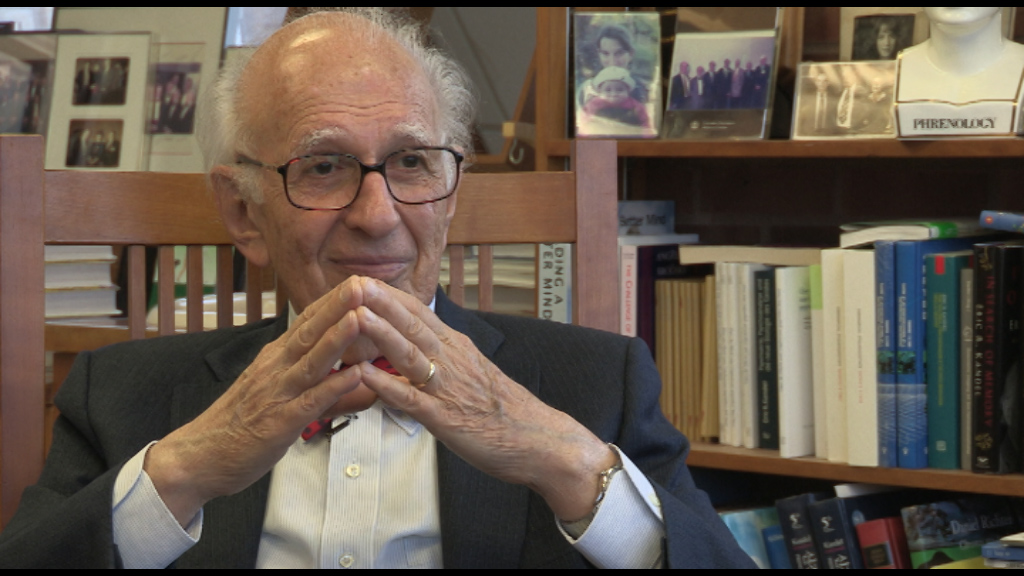NEXT STORY

Dissecting LTP and memory storage
RELATED STORIES

NEXT STORY

Dissecting LTP and memory storage
RELATED STORIES



The work on Aplysia was extremely encouraging, and I considered myself much more fortunate than I thought I had a right to be, but I realised in Aplysia, as wonderful as it was, we were studying implicit memory, a memory for motor and perceptual skills, which did not require conscious attention.
What Brenda Milner described, and what really appealed to the psychoanalytically-oriented part of myself was explicit memory storage, a conscious recall of information by people, places, and objects. And conscious recall, I mean, that relates to consciousness per se, is a very deep problem, and I clearly, you know, wanted to get involved in studying that.
Now I left the hippocampus in 1960, and I decided in 1990 – 30 years later – that I wanted to return to it, to explore explicit memory storage. And the reason I wanted to return to it was not only because the problem was so challenging, but because there had been three major advances in the study of hippocampus.
One is Bliss and Lomo had described their form of synaptic plasticity which they call long-term potentiation (LTP) which they produced by stimulating one of the pathways in the hippocampus at very high frequencies – 100Hz or more – and they produced a facilitation that lasts for very long periods of time. Now this was really quite interesting although it had some problems with it.
One problem was that that frequency was unusually high, and many people, myself included, thought that this was not the kind of frequency that's going to be used by learning processes, certainly nothing of that frequency… nothing comparable to what we had seen in Aplysia.
Number two, that its relationship to memory in the hippocampus was also uncertain. Now Richard Morris had worked out a behavioural task, and had shown that if you block LTP, which we knew was mediated by NMDA receptors, if you blocked the NMDA receptors that you interfered with memory storage. And that was encouraging, but it was very correlational and indirect because this drug affected lots of synaptic actions in the brain. So I think, you know, I felt one needed to understand LTP better.
But in addition, John O'Keefe had made the marvellous discovery that the hippocampus encodes space. That there are cells in the hippocampus that fire when a particular animal assumes a certain position in space. So there are lots of these place cells, and some fire when the animal is here, some fire when the animal is here, some fire when the animal is there, and if you look at the whole pattern, you can predict where the animal is by the firing pattern of the cells. And he showed me one day, when I was in London, what this is like. It was absolutely remarkable. He put the mouse on the table and it had multiple recording electrodes in, it was really quite spectacular. And that also made a lot of sense to me, because when Alden and I were trying to see what sensory inputs drive hippocampal pyramidal cells, and we tried light and we tried touch, we tried auditory stimuli; they weren't particularly effective. But place is a multi-sensory modality, and you could understand why we were not effective.
And the third thing is that Capecchi and Smithies had just described methods for knocking out genes in mice. So here was a method that allowed you to dissect LTP, to relate different components of LTP to memory storage in hippocampus, and to relate both of those things to place cell behaviour. So it opened up a whole new approach to the hippocampus that made the hippocampus very attractive.
Eric Kandel (b. 1929) is an American neuropsychiatrist. He was a recipient of the 2000 Nobel Prize in Physiology or Medicine for his research on the physiological basis of memory storage in neurons. He shared the prize with Arvid Carlsson and Paul Greengard. Kandel, who had studied psychoanalysis, wanted to understand how memory works. His mentor, Harry Grundfest, said, 'If you want to understand the brain you're going to have to take a reductionist approach, one cell at a time.' Kandel then studied the neural system of the sea slug Aplysia californica, which has large nerve cells amenable to experimental manipulation and is a member of the simplest group of animals known to be capable of learning. Kandel is a professor of biochemistry and biophysics at the College of Physicians and Surgeons at Columbia University. He is also Senior Investigator in the Howard Hughes Medical Institute. He was the founding director of the Center for Neurobiology and Behavior, which is now the Department of Neuroscience at Columbia University. Kandel's popularized account chronicling his life and research, 'In Search of Memory: The Emergence of a New Science of Mind', was awarded the 2006 Los Angeles Times Book Award for Science and Technology.
Title: What makes the hippocampus so attractive
Listeners: Christopher Sykes
Christopher Sykes is an independent documentary producer who has made a number of films about science and scientists for BBC TV, Channel Four, and PBS.
Tags: John O’Keefe
Duration: 4 minutes, 48 seconds
Date story recorded: June 2015
Date story went live: 04 May 2016